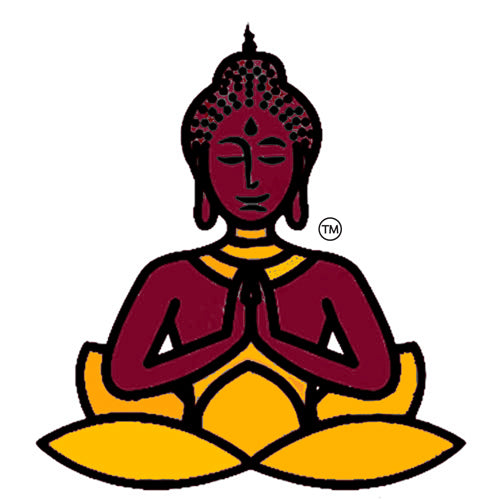The Five Buddhas
Teilen
The Five Buddhas Whoever allows the five kinds of primordial awareness to reveal themselves through meditation, attains the ultimate outcome: The level of the five Buddha families.

Vairochana
Vairochana – the first of the five Buddha families. The translation of his name means the One Who Completely Manifests. He clarifies the nature of all phenomenal reality. He allows the true nature of phenomena to appear unmistakeable and perfect. He elucidates the nature of all phenomenal reality. Vairochana is the Buddha who gives rise to all of the four kinds of enlightened activity. He serves as the basis or origin for all of the extraordinary achievements, and for all of the five Buddha families.
Vairochana holds a wheel, an object that turns and makes it possible for us to comfortably reach a certain destination. It is found in other fields of Buddhism; for example, above the entrances of Buddhist temples. The Wheel of the authentic teachings has eight spokes as a sign that it is possible to reach the ultimate destination of Buddhahood by means of the Eight-Fold Path of the Noble Ones. According to the Eight-Fold Path of the Noble Ones, it is possible to attain the primordial awareness of the dharmadhatu, which is the essence of Vairochana. As a representation of his essence, Vairochana holds the wheel of the authentic teachings.
Akshobhya
Akshobhya – the lord of the Vajra family. The translation of his name means the Unshakable One. He is the Unshakable One because his nature, complete pure anger expresses itself in the form of stability and patience, as well as the enlightened activity of pacifying. These are exactly what a vajra represents. Akshobhya is the self-expression of completely purified anger. Whoever is angry cannot find peace. Instead, all burdens and negative conditions arise in them. The complete purification of anger by means of the practice of Akshobhya - the meditation upon him and aspirational prayers directed to him - allows calming enlightened activity and the pacifying extraordinary achievements to happen.
Akshobhya holds the symbolic attribute of a vajra. A vajra is the symbol for unchangeability and represents the endowment of a stable and clear way of appearing.
Ratnasambhava
Ratnasambhava – the lord of the Ratna family. His nature is wealth, merit and excellence. Translation of his name means the Source of Preciousness. He embodies the transformation of the klesha-mind and thus the primordial awareness of equality. Kleshas in Buddhism are the mental states that cloud the mind and manifest in unwholesome actions. Kleshas include mental states such as fear, anxiety and anger. The nature of the klesha-mind is to grasp on to a self, a pride that takes the self to be the highest and the best. When the klesha-mind is abandoned, the pride accompanying that high esteem of the disappears all by itself, under its own power. Whoever develops pride closes the doors to all positive qualities. If you think you are the best, the most superior, you will not develop any new qualities. Ratnasambhava holds a jewel as a symbol of his nature. Jewels and precious stones often represent the possession of perfect wealth, which is why the jewel is used as an example for the arising of happiness and joy. Ratnasambhava represents the enlightened activity of increase and the extension of life, wealth, merit, joy and happiness. He is the expression of completely pure pride; therefore, he holds a jewel in his hand.
Amitabha
Amitabha – the lord of the Lotus family. Translation of his name means Buddha of Infinite Light. His essence is freedom from attachment and capability of the highest understanding. When desirous attachment is perfectly purified, it resembles an utterly beautiful and attractive flower with a perfect shape and bright colours. A real flower of such beauty, though not an object for attachment because it is transitory and cannot keep its beauty for hundreds of years. Because of this impermanence and the flux of change, a flower is not a suitable object to develop attachment with, and when desirous attachment is wholly purified, no attachment can arise, no matter what object is involved. Since completely pure desirous attachment expresses itself through Buddha Amitabha, he holds a lotus flower in his hand.
Amoghasiddhi
Amoghasiddhi – the lord of the Karma family. Translation of his name is One Who Accomplishes What Is Meaningful. His nature is to accomplish the purification of the affliction of jealousy for the benefit of all sentient beings. Generally, due to the affliction of jealousy, we are not able to dissolve hindrances and negative conditions, instead our capabilities diminish. On the other hand, when jealousy is completely purified, we are able to destroy burdens and negative conditions. For this reason, it is Amoghasiddhi who grants us the wrathful enlightened activity and extraordinary achievements.
